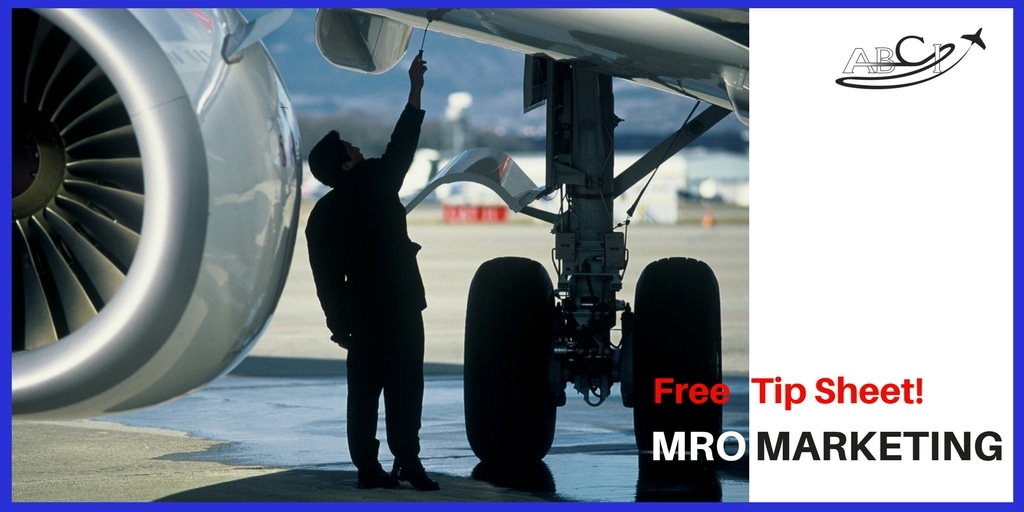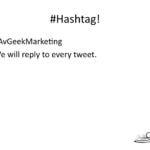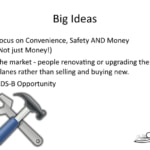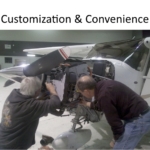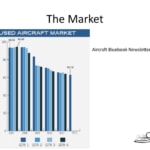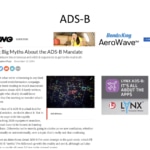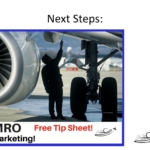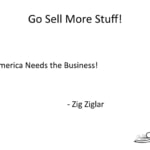MRO Marketing – Aircraft Service & Repair Marketing
What is MRO Marketing?
MROs and aircraft maintenance organizations have a specific set of marketing objectives – connecting with airlines and charter organizations, fleet managers and pilots of aircraft, especially just when they need service!
There are people who say that the money in aviation is actually made on the ground. And providing service and aircraft repair can be very lucrative. But it takes a great location, great service technicians, and a great MRO marketing plan. We can help you with that last bit.
In this episode, John and I talk about some of the factors that aircraft owners and fleet managers think about when choosing an MRO facility, and how marketing can help get YOUR part 145 repair station to be noticed and count in your favor in their calculations.
Transcript – MRO Marketing – How to Successfully Market Aircraft Service & Repair to Aircraft Owners & Managers
Paula Williams: Welcome to aviation marketing Hangar Flying Episode Number 81. Today we are talking about MRO marketing. I’m Paula Williams.
John Williams: I’m John Williams.
Paula Williams: And we are ABCI and ABCI’s mission is . . .
John Williams: To help all you ladies and gentlemen out there sell more products and service in the aviation world.
Paula Williams: Absolutely. And MRO marketing was one of the things we were asked to talk about because it is a little different right? `
John Williams: Yes, it is.
Paula Williams: And a lot of folks in the MRO community, aircraft maintenance and overhaul and so on or maybe marketing is not their forte.
They spent a lot of time learning how to do what they do and they can be really, really brilliant very technical people. But a lot of them haven’t spent a whole lot of time on sales and marketing as a, as a practice, right?
John Williams: Yes.
Paula Williams: Okay.
John Williams: I mean, yes, they haven’t.
Paula Williams: Yes, they haven’t. [LAUGH] So anyway, if you have any questions on this or any other topic that we do, use the hashtag #AvGeekMarketing on Twitter, Facebook, Instagram, anywhere that you are comfortable. Talking and we will watch for your comments and respond to those. You can also comment on our blog.
That’s probably the most reliable place to make sure that you get a response quickly but we do watch the other social media as well, right?
John Williams: Yes we do.
Paula Williams: Okay, [LAUGH] all right, and we’ll reply to any question as quickly as we can. Okay, so big ideas.
We like to have three big ideas from every episode, and then we kind of go through them in more detail and summarize at the end. So the three big ideas about MRO marketing is number one, to focus on convenience, safety and money, not just on money, right. A lot of MRO marketing we’ve seen puts a lot of emphasis on the dollars.
John Williams: True.
Paula Williams: Okay, number two is the market. People are renovating or upgrading their planes rather than selling and buying new.
John Williams: Of course. The market’s down right now.
Paula Williams: Exactly and a bad market for some people is a good market for other people such as, for example, like you, if you’re in the MRO business.
John Williams: Yep.
Paula Williams: And then the third thing is the ADS-B opportunity with all aircraft being required to upgrade by 2020 except under very limited circumstances. This is an opportunity for a lot of people to be getting some new avionics and other fabulous things. So we’ll talk about how to position yourself so that you’re getting the most of that opportunity, right?
John Williams: Absolutely.
Paula Williams: Okay, so first of all let’s talk about what people want out of their MRO organization other than a good deal, right?
John Williams: [LAUGH] Yes. Convenience. Good customer service.
Paula Williams: Right. And this is you and.
John Williams: Mike.
Paula Williams: Mike. Yeah, exactly at what used to be the Millionaire in Salt Lake City.
John Williams: No, this isn’t the Millionaire. This is
Paula Williams: Leading Edge.
John Williams: Yeah. It was the Leading Edge hanger I think.
Paula Williams: Okay. Right. And Mike did a lot of custom maintenance on our 172’s that we had leased back to the flight school there, and what did you like about?
About Mike. What was really cool about him? I know you don’t like a lot of people. [LAUGH]
John Williams: What do you mean I don’t like? I like everybody.
Paula Williams: You like everybody but you’re very particular about maintenance people.
John Williams: Yeah, about who works on my airplane, heck yes.
Paula Williams: Absolutely.
John Williams: Well, he was extremely knowledgeable, extremely experienced. That would explain. He didn’t mind me looking over his shoulder because I didn’t get in his way. And he would explain to me what he was doing and it was just great.
Paula Williams: Right, he went way out of his way to make sure that he had time for our airplanes I think and did what you wanted done when you wanted it done.
I’m not sure how he did that, but he somehow managed.
John Williams: Yeah.
Paula Williams: Absolutely, and the other thing, I don’t know if you’ve seen that poster that a lot of people have in auto mechanic shops that say, here’s the fee if you. Here’s the fee and then here’s the fee if you watch and it’s $50 more.
And here’s the fee if you help and that’s $100 more. [LAUGH] Right?
John Williams: Right. Well, I didn’t help but I just wanted to see, I actually wanted to stand back and take pictures and he asked me to get involved and help because, he knew my background so. I had rebuilt engines before so it wasn’t a big deal for me.
But he knew that so he had no trouble with me, holding this tool and a flashlight or doing whatever.
Paula Williams: Right, and I think everybody who brings their plane in for service has a different level of expectation. Some of them want you to do everything and hand it back to them with a white glove.
Approach and they want you to pick it up and deliver it after the work is done. They don’t want to have anything to do with the maintenance.
John Williams: Well actually, we know of a MRO facility I don’t know, South Dakota, North Dakota somewhere out there. That they got quite a large following and what they will do is you call them from wherever you are, they will go pick up your airplane and bring it back to their facility.
Complete the annual or whatever needs to be done, and clean the airplane, and take it back. And it’ll be right in the chocks where they got it, and you will not know.. That it’s ever been gone when you show up.
Paula Williams: Right.
John Williams: Except for the bill. [LAUGH] [CROSSTALK]
Paula Williams: There’s a note there or a card with the details of what service had been performed and what they found, and everything else.
John Williams: Yeah, exactly, that’s real service.
Paula Williams: That is real convenience, exactly. And for a lot of folks, that matters a lot more than the money involved, right?
John Williams: Exactly, and their fee for doing that was aside from the cost of the flight back and forth insignificant, they just did it I think.
Paula Williams: I think for a lot of folks, the cost is so high to have an airplane on the ground broken. That they would prefer to pay a little more if you can accommodate their schedule and if you can accommodate their needs like that.
The pickup and delivery might be above and beyond what you can do but there may be things you can do to accommodate a schedule that are far more important than the money depending on who your customer is. How much it’s costing them to have their plane on the ground broken right.
Cool. So think about customization. Think about convenience. And think about how you can advertise and market those thing especially as customer testimonials. If you can get a testimonial from somebody like John who is picky as all get out, right?
John Williams: Well yeah, I mean what happened is prior to this picture was you tried to start the airplane and the starter blew up.
Paula Williams: [LAUGH]
John Williams: Quite literally, I mean, pieces were falling. The engine started but then there was pieces falling out from the cal and I was standing outside, I thought you were going to flying and I said, just-
Paula Williams: Yeah, cut. [LAUGH]
John Williams: Cut. And then we pulled it in, so as he was going through replacing his tire we looked at pieces and parts I said, do you know what?
You got it apart, let’s just replace this and a few items, air filter, whatever, and so we did that along the way, which is why I like to look at stuff, because I like it right up to spec.
Paula Williams: Right, and when that starter engine blew, it was blowing little pieces of metal all through the cowling.
So we didn’t really know what was okay and what wasn’t until we went through it piece by piece, so it was an education for us. We were kinda new to 172 ownership at that time. And it was a good opportunity for us to see all the pieces and parts and how that all fit together and everything else.
John Williams: And started with some more items so it was you know Anyway.
Paula Williams: Yeah, so we really like mechanics who are also educators. [LAUGH] And willing to go through that with us. So that was really cool for us. But whatever it is that your customers really like about your organization.
And if you have a customer that you go above and beyond for, ask if they would mind, if you write up a real brief testimonial and put it on your website. Because, that’s the only way other people will know this is the difference between you and all the other guys out there right?
Okay, cool one thing we really like and we wish that MRO’s and people in service industries or repeated service industries. Would do this more is to do these little we call them Jiffy Lube cards, right. Because, Jiffy Lube kind of make them popular. But anybody can use this technique.
When you do service on an aircraft it is very likely you can predict a time or a number of hours or something. Or the owner can predict for you, when he’s most likely to want to bring that back in.
John Williams: And no, you can look at when you look at the maintenance logs you can see the rough time frames.
Paula Williams: Yeah.
John Williams: And predict within a fair degree of certainly what’s going to happen. When they’re going to need something.
Paula Williams: Right, so you have a set of timed services, and then you also have a set of mileage or whatever you want to call it services. And either way you can predict, I think, to a fair degree when they’re going to need service again.
And you want to intercept them before they take their aircraft somewhere else.
John Williams: You can base it on either hours flown or date.
Paula Williams: Exactly, so they should be getting a postcard in their mailbox just about the time that they start thinking about taking that aircraft back in for a different kind of service or the same service over again.
John Williams: Exactly.
Paula Williams: So I think every MRO should be doing this kind of service reminder cards.
John Williams: At the minimum.
Paula Williams: Yeah, absolutely. But very few actually do. So very cheap, very easy. If you get this in a system-
John Williams: Very effective.
Paula Williams: Right. In a system like a CRM system then it’s fairly easy to do and easy to make happen and very inexpensive.
All right. So that is convenience and service and customization. There’s a lot that we could talk about there. But most of the MRO advertising that we see has more to do with price than it does to do with convenience and customization. So you want to think about all three of those factors convenience and customization are often more important than the money.
John Williams: Sure and once you get them and then you can get to know their aircraft. To repeat customers you know other things that you could sell them. While the thing is in the shop.
Paula Williams: Yep, so once again that’s thing number one, thing number two is the market.
The market has gotten so bad if you pick up a controller magazine there’s very few prices even listed, they’re all call for. Call for advise is that whether they put it?
John Williams: No, they say call for guidance.
Paula Williams: Call for guidance.
John Williams: [LAUGH]
Paula Williams: On aircraft prices, so because of that just about anybody who has an aircraft and does not have to sell it right now is not selling it.
John Williams: And even in the business they worry and we know Of aircraft that are for sale that are non in the market. [LAUGH]
Paula Williams: Right.
John Williams: We are not even brokers [LAUGH].
Paula Williams: Exactly. So, yeah, there’s a lot of folks who are, would do a lot to not sell their aircraft.
They need to renovate, add new, add new avionics, redo the interior, you know, whatever they need to do. They’ll often come out money ahead rather than trying to sell the airplane and buy something else. So.
John Williams: The market right now the only people that I had one or two brokers tell me the only people really win right now, are the people jump into the aircraft market want to buy used.
Paula Williams: Right, exactly.
John Williams: Or new, but better off used because the prices are way down, way down.
Paula Williams: Absolutely, so you can run some pretty nice advertising and some pretty good offers that are very appealing to people who Rather than upgrading their airplane. They typically upgrade their planes every four years or whatever their cycle is.
May want to hold off on that for a year or two if they can refurbish the interior one more time, get a new paint job. There are lots of things they can do to make their old airplane serve their needs.
John Williams: A little longer.
Paula Williams: A little longer, exactly.
So if you can help them do that that’s a great way to focus your-
John Williams: And everybody wins.
Paula Williams: Right, okay. Another opportunity that is in the works of course is ADS-B. All GA aircraft will be required to have ADS-B out equipment by 2020. There’s actually a pretty good summary of this, the best that we have seen is, is an article by Steven Pope.
It’s now a classic. [LAUGH] It was written in 2014, so it’s very old. But we think it’s probably one of the best explanations for lay people and aircraft owners who may not be in the business of aircraft.
John Williams: Yeah, at the time he says that only 3% of GA aircraft have ADS-B installed, this is 2.5 years ago.
And only 10% of airlines have ADS-B installed.
Paula Williams: Right, and a lot of people have been putting this off and putting it off. And this happens a lot in aviation. There’s a lot of things that you have to do now, and there’s other things that you will be thinking about in the future.
But aviation people tend to be very deliberate about the decisions that they make and also they tend to be very I would say as conservative and as late as possible on a lot of different things. But they’re going to have to get this done if they’re going to continue flying.
So now is a really good time to start getting on their radar. And you may not sell them an ADS-B system or an ADS-B compliance system tomorrow but you can get their attention now, if you start providing some really good information about what’s available from your shop. And you start becoming a source of information as they come up with questions or they start talking and thinking about it.
John Williams: Sure and then the next time you have it in there and you have to tear into the dash for some reason, you can tell them that’d be a great time to go ahead and put ADS-B in there.
Paula Williams: Right, cuz it’ll save you the cost of.
John Williams: You’ve already got to be in there and just add another device, depending on the aircraft of course you might have to modify the panel but, still it’s the time to do it.
Paula Williams: Exactly. So two things. One, you can certainly recommend that all of your folks get up to speed on ADS-B. So when your customers start talking to your technicians they know what they’re talking about. That’s very important. And then the other thing is you can start planning to provide this information on your website.
You could do, some blog post or social media post, what we call information snacks about ADS-B, did you know that? While you’re getting your annual is a good time to get ADS-B done because, your aircraft is in the hangar anyway.
John Williams: Or your phase inspection.
Paula Williams: Or your phase inspection, lots of things that you could do to make that more palatable for people.
One really good opportunity that you can do and that we can help you with is of course to create some kind of a fact sheet. About the ADS-B solutions that you provide for the types of aircraft that you service and you can get really specific about here are some questions and answers about ADS-B and how it applies to this aircraft or that aircraft.
Or your area or the avionics that are available from your shop.
John Williams: And why your shop is the better choice than others.
 Paula Williams: Exactly, you could even do a comparison of the different ADS-B solutions and how one may be better than the other for whatever reason. So that could be something that’s a lead magnet for your shop.
Paula Williams: Exactly, you could even do a comparison of the different ADS-B solutions and how one may be better than the other for whatever reason. So that could be something that’s a lead magnet for your shop.
An opportunity to what I mean by lead magnet in case you haven’t in case marketing is not your thing.
John Williams: [LAUGH].
Paula Williams: What I mean by lead magnet is a sheet like a PDF that you can download from a website that you have to enter your name and email address for example and then you can download this fact sheet.
And then it has the comparisons and has some really good information. And that has to be something that’s really worth downloading to make it worth people’s time. But, what that does is it helps you build your list of people who are potentially interested in this sort of thing.
And then people who you can later send postcards to or emails to or provide other information or follow up by phone. So it will help you increase your sales for other services as well. While you’re getting peoples information.
John Williams: Absolutely.
Paula Williams: Okay, fantastic. So the main thing, I think about MRO’s and everyone else is that, if marketing is not your thing, there can be a big temptation to indulge in what we call random acts of marketing, right.
John Williams: [LAUGH] Which is not a good thing because it’s expensive and doesn’t get you any leads.
Paula Williams: Exactly, so you get a brochure from an advertiser of some sort for Google AdWords, or for aviation brochures or postcards, or for a trade show or for whatever, and you decide that’s a good opportunity to do some marketing and you go do it.
Without connecting it with everything else that you’re doing. And in some cases, we’ve seen people send out postcards with a, with a phone number that ends up happening while their phones system is down. [LAUGH] Crazy things that happen because of random acts of marketing. Because you really didn’t plan it through and put it together so that your website is up, you got a landing page for people that are responding to this.
This postcard or this brochure maybe when you go to a trade show you have some kind of a call to action or a reason to follow up with people that’s connected to your website, connected to your social media. You’re using these things in a way that’s all connected with each other.
Just like when you’re flying an airplane, there’s always the next step. You’re never done until all the pieces start moving, right?
John Williams: Marketing is the preface to sales. So no matter what you do in marketing, somebody’s going to have to pick up a phone and make a call.
Paula Williams: Exactly.
John Williams: And that’s just the name of the game. And so you need to have somebody that’s willing and able to do that. And then you start getting quality leads and sales.
Paula Williams: Right, and inbound calls as well because whenever people run an ad a lot of times those calls will come in the person answering the phone has no idea what was on the ad.
[LAUGH] We’ve had that happen too.John Williams: Yes we have.
Paula Williams: Okay, yeah so no random acts of marketing is really kind of the moral of the story for all of the things we do. But once again to really quickly summarize the big ideas from this episode, number one, focus on convenience, safety, and money, not just money, right?
Okay. Number two, the market really stinks right now for people selling aircraft, but that means it’s really good for you right now, if you’re helping people keep their aircraft longer and be happier with it.
John Williams: Right.
Paula Williams: Okay, and then number three is the ADS-B opportunity.
John Williams: Yeah, absolutely.
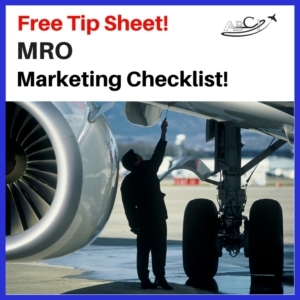 Paula Williams: Right. So we do have speaking of lead magnets we have a tip sheet about marketing your MRO with some really good ideas from things that we’ve done. The different ideas that we had talked about and some of our recipes if we’d call them that for marketing your MRO.
Paula Williams: Right. So we do have speaking of lead magnets we have a tip sheet about marketing your MRO with some really good ideas from things that we’ve done. The different ideas that we had talked about and some of our recipes if we’d call them that for marketing your MRO.
If you go to our website, that’s ABCI1.com/MRO. You’ll go to a page where you can enter your name and email address and download that tip sheet.
John Williams: Right.
Paula Williams: And that will come to you as a PDF. You can print it out, stick it on your wall, check things off as they get done and make sure you’re doing what is basically the industry best practices.
For marketing your MRO and getting more customers, right?
John Williams: Absolutely.
 Paula Williams: Okay, so every episode we’d like to talk about lives up with the Insiders
Paula Williams: Okay, so every episode we’d like to talk about lives up with the Insiders
Paula Williams: Yvan Boniface just finished up the Aero Expo Panama Pacifico, got a lot of really good news coverage in the area and in the United States with some press releases, some interviews on the news.
He was doing some live video on social media, basically using all of the things that we recommend and doing a really good job of promoting the event. And this one was bigger, and better, and cooler. Then last year which was their first annual.
John Williams: Yeah, this is their second annual and I haven’t seen in numbers yet, but I wouldn’t surprise I had double there more in size.
Paula Williams: Right. So a really growing area and if you’re thinking about globalizing or if you’re thinking about expanding into a larger market. He’s a really great guy to talk to because, he does business in Latin America, the Caribbean, South America, all of that is a really great, hugely growing opportunity for business aviation.
John Williams: Yes, it is.
Paula Williams: And all of the big guys were down there. JSSI and Umbra Air. And Rockwell Collins and you can see the list of folks that were exhibiting. There.
John Williams: Gulfstream was there too, I think.
Paula Williams: No, but HondaJet was.
John Williams: No, HondaJet was, right.
Paula Williams: Yep, and lots of folks, so really good stuff. Textron was.
John Williams: That’s right.
Paula Williams: They make a lot of different aircraft as well. So go sell more stuff.
John Williams: America needs the business. Zig Ziglar is our favorite thanks.
Paula Williams: [LAUGH] Exactly. Subscribe to our podcast on iTunes, Stitcher, or Google Play and please do leave us a comment, especially on iTunes.
We love to see comments there and ratings as well. That’s our biggest opportunity for that. So, if you liked this podcast, do let us know what you like to hear. Once again, the MRO topic was suggested by our listeners so we’re really happy to comply with listener requests.
Just like old time radio, right.
John Williams: That’s right.
Paula Williams: Okay. See you next week.
John Williams: Ciao.
..[/fusion_builder_column][/fusion_builder_row][/fusion_builder_container]
Podcast: Play in new window | Download
Subscribe: Spotify | Amazon Music | RSS

